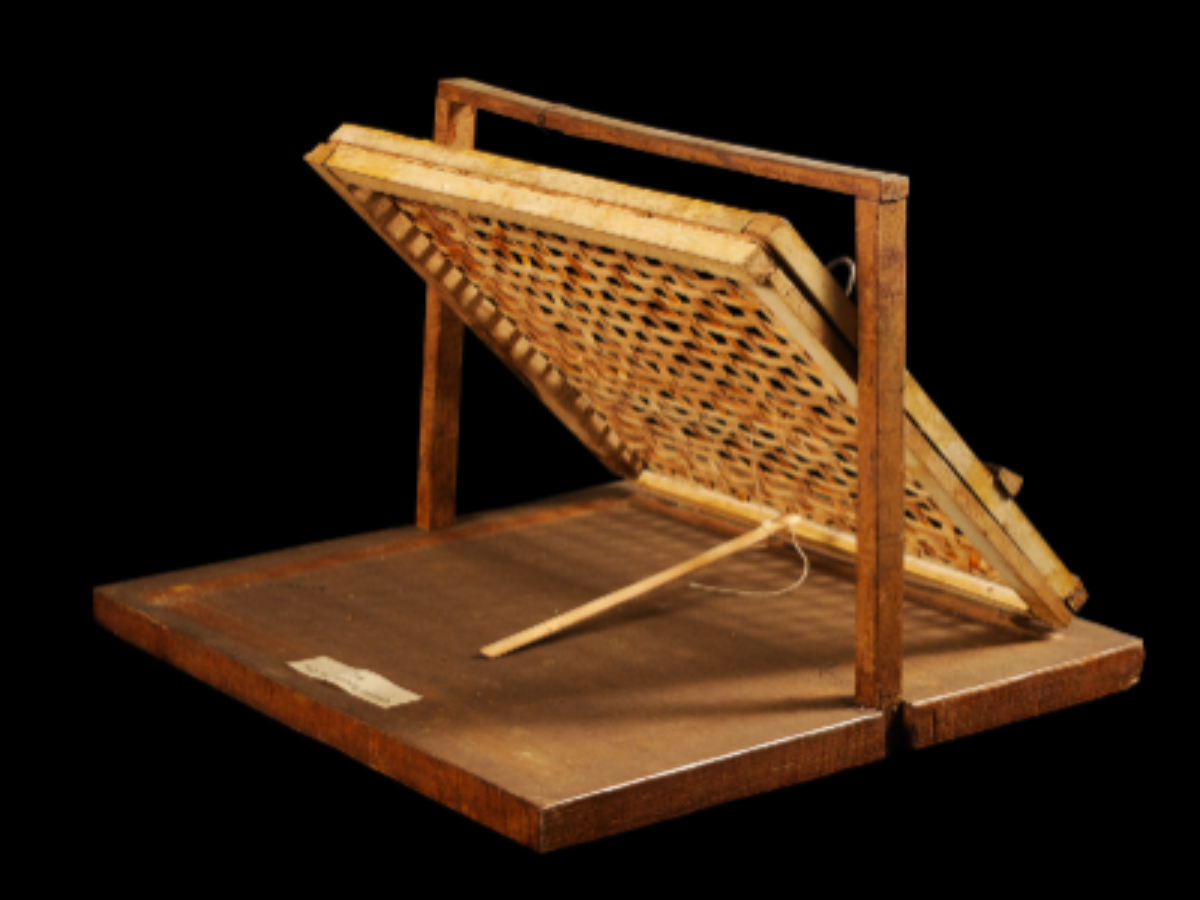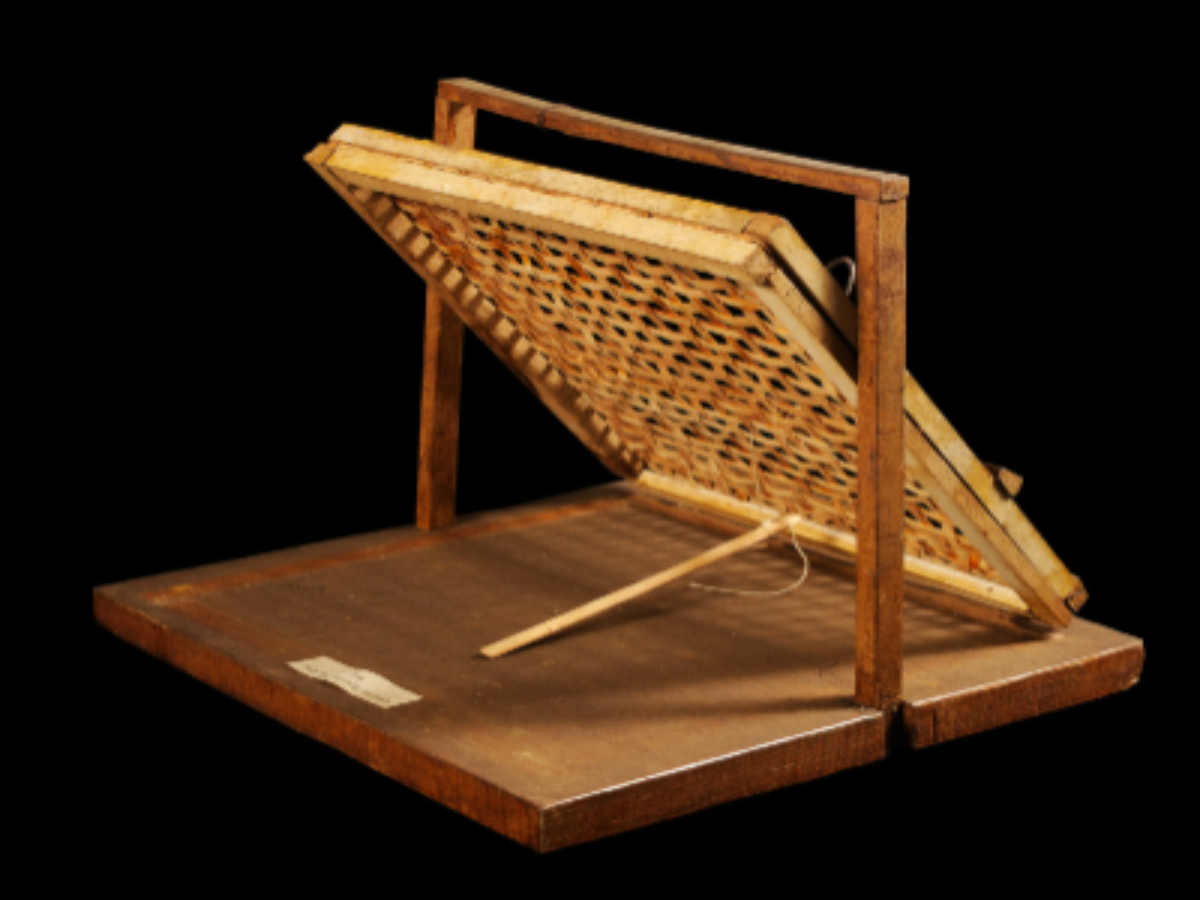State
Tribe Name
Art Type
short description
This wooden trap, handmade by the Mizo tribe of Mizoram, represents their profound understanding of nature and subsistence. This trap is intended to catch the small animals of Mizo forests and is an apt construction using natural, durable materials available in the environment. A square wooden base supports an upper wooden frame attached by two iron hinges, allowing easy opening and closing. The upper frame's central section contains a part composed of loosely but firmly woven bamboo splits, which serves as an area of impact or pressure. A wooden handle located in the center allows the trap to be easily operated, while another wooden section with an iron handle is mounted to aid in opening the upper frame from the base when required.
Thumbnail

Filter Postion
Left
Filter Background
Off
Theme
Filter Header Image

content
Image

description
This wooden trap, handmade by the Mizo tribe of Mizoram, represents their profound understanding of nature and subsistence. This trap is intended to catch the small animals of Mizo forests and is an apt construction using natural, durable materials available in the environment. A square wooden base supports an upper wooden frame attached by two iron hinges, allowing easy opening and closing. The upper frame's central section contains a part composed of loosely but firmly woven bamboo splits, which serves as an area of impact or pressure. A wooden handle located in the center allows the trap to be easily operated, while another wooden section with an iron handle is mounted to aid in opening the upper frame from the base when required.
Though its functioning may appear simple, the trap indeed embodies the environmental knowledge of the Mizo people and their sustainable practices in hunting and trapping. These traps were resources for subsistence hunting so that minimal harm was done to the environment and animal populations in question, a vital aspect of tribal conservation ethics. Apart from being useful implements, they belong to the Mizo tribe's material culture and testify to their craftsmanship, ingenuity, and adaptability to local challenging terrain.
Though its functioning may appear simple, the trap indeed embodies the environmental knowledge of the Mizo people and their sustainable practices in hunting and trapping. These traps were resources for subsistence hunting so that minimal harm was done to the environment and animal populations in question, a vital aspect of tribal conservation ethics. Apart from being useful implements, they belong to the Mizo tribe's material culture and testify to their craftsmanship, ingenuity, and adaptability to local challenging terrain.
Image Mode
landscape
promoted
On
Verified
Off
